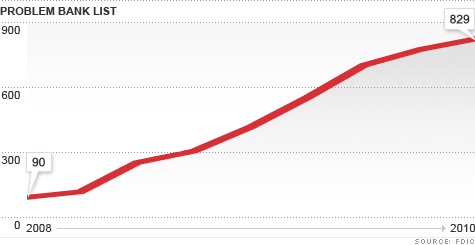
Here are my Top 10 links from around the Internet at 10 past 4 pm, brought to you in association with New Zealand Mint for your reading pleasure. I welcome your additions and comments below, or please send suggestions for Thursday's Top 10 at 10 via email to bernard.hickey@interest.co.nz. Remember that registered commenters can more easily include links out in their comments. Use the box in the right hand column to register. We're turning off unregistered comments from September 12. I'll pop any surplus suggestions I get into the comment stream under the Top 10.
1. 'All in Allan's hard copy ledger' - Tim Hunter at BusinessDay has an excellent summary of the rise and fall of South Canterbury Finance and Allan Hubbard
"This is the problem with South Canterbury," said one. "It's a tangled web of Hubbard-sells-things-to-Hubbard." But Mr Hubbard's reputation as a man of integrity meant few questioned his actions.
SCF was just the public part of a large and intertwined private empire of holding companies, farms, trading businesses and other finance companies. Apart from Mr Hubbard himself, no-one really knew how the pieces fitted together. Accounting statements have since revealed transactions designed to shore up SCF's balance sheet, circular deals with lenders and Mr Hubbard paying interest for some borrowers himself.
SCF insiders told of a hard-copy ledger in which Mr Hubbard tracked loans he administered personally.
Trustee Executors also seems very knowledgeable in hindsight. Yet they never mentioned it at the time...
After appointing receivers yesterday, trustee Yogesh Mody explained the reason for its alarm two years ago: "We were becoming increasingly concerned about the quality of the loan assets amid a period of general financial dysfunction."
2. How Timaru built Auckland's swankiest hotel - Anne Gibson at NZHerald also has a nice backgrounder on the types of loans that South Canterbury Finance was doing in those mad final few years. It turns out South Canterbury was behind the massive refurbishment of the Hyatt complex near the University in Auckland across the road from Fonterra's head office.
That document, issued then withdrawn often as SCF's credit rating slid, revealed that its single biggest loan was a huge NZ$42.3 million "for a large commercial hotel refurbishment and redevelopment". That had people speculating that the money was lost on Auckland's Hyatt hotel/apartment project, finished some years ago, a property with close South Canterbury links after Savoy developer Jihong Lu quit.
Maier hosted investors at the Hyatt at his June roadshow. John Dalzell, now at Sea+City, recalled being Savoy's chief executive of property, working for Hudson which took over the project "but for the last 2years representing South Canterbury Finance's interests in the Hyatt properties".
The five-star hotel underwent a lavish refurbishment and the Hyatt Residences luxury apartments were developed next door and overseen by Dalzell who lived in the penthouse there.
3. Problem banks - The number of problem banks being monitored by US authorities rose to 829 in the June quarter, CNN reports. HT Andrew Patterson.
The government's list of troubled banks hit its highest level since 1993 during the second quarter, although the pace of growth continued to slow, according to a government report released Tuesday.
The number of banks at risk of failing rose by 53 to 829, the Federal Deposit Insurance Corp. said in its quarterly survey of the nation's banking system. That increase marks the smallest rise since the first quarter of 2009.However, it's still nearly double the 416 banks that were on the FDIC's watch list a year ago and is up from 775 in the first quarter of this year.
4. China now has more warships than America - The Economist reports the International Institute for Strategic Studies saying that it believes China now has more warships than America. HT Alex via email.
This striking trend is yet another manifestation of the rise of China. But it also reflect the cost of warships and other weapons built by America (see article).
Philip Pugh, author of “The Cost of Seapower”, a 1986 study of shipbuilding costs since the end of the Napoleonic wars, argues that the industrial revolution made the problem more acute: the rapid pace of technological change set off a race to build bigger, more powerful, more heavily armed and better-protected battleships.
At some point, as unit prices rise, one of two things must happen: countries must either scale back their ambition, or seek game-changing technology, as they did when the battleship gave way to the submarine and aircraft-carrier.
5. Flight to passive - Felix Salmon at Reuters has done some clever things with mutual fund data in the US to calculate that many investors there are pulling their money out of actively managed funds and putting it into index tracking Exchange Traded Funds (ETFs), which are low cost and passively track prices. That's something to think about as we contemplate making KiwiSaver compulsory.
People aren’t pulling their money out of the stock market, they’re just pulling their money out of actively-manged mutual funds in general, and actively-managed domestic mutual funds in particular. If you look at growth rates, the numbers are even starker. Actively-managed domestic mutual funds saw an outflow of $44 billion in the first seven months of 2010, which was 1.45% of their total value.
Equity ETFs, by contrast, saw an inflow of $21.4 billion, which was 3.12% of their total value. If you go back to 2009, the numbers are -2.07% and +10.78%, respectively.
6. That's some surplus - Paul Kedrosky points out that the number of vacant houses in the United States is now roughly twice the entire Canadian housing stock.
7. Still a lot more labour to soak up - Some people have worried that China may run out of cheap labourers soon and lose its competitiveness. Economics Professor Fan Gang (great name) points out at Project Syndicate that there's still an awful lot of cheap rural labour that has yet to migrate to the cities.
Although migrant workers earn only about $1,500 per year on average, the income gap between them and agricultural laborers provides a powerful incentive for the latter to try to find better-paid non-farm jobs. Naturally, this competition in the labor market suppresses non-farm wages: whereas labor productivity in non-farm sectors increased by 10-12% annually in the past 15 years, migrant workers’ real wages have increased by only 4-6% per year.
As a result, income disparity between low-end labor, on the one hand, and professionals and investors, on the other, has also increased. All this means that the process of industrialization in China still has a long way to go. To reduce farm labor to 10% of the labor force (the point at which, judging by historical experience elsewhere, China may achieve worker-farmer wage equilibrium), the economy needs to create about 150 million new non-farm jobs.
Even if the economy continues to grow at 8% per year, China might need 20-30 years to reallocate agricultural laborers and reach “full employment.” But this requires generating eight million new jobs every year, including five million for farmers leaving the countryside. The wage increases of recent years have not changed the basic cost structure of Chinese companies. An analysis by Goldman Sachs shows that, despite real wage gains, the share of labor costs in total manufacturing costs is lower than it was in 2001 – a trend that continued in the first half of 2010. Even if real wages increase in some coastal cities, “surplus labor” could keep the national average flat.
And even a real wage increase on the national level will not undermine competitiveness if labor productivity grows still faster. So the conclusion seems to be that wage growth will not threaten China’s competitiveness in the next 10 or even 20 years. As China will not complete the process of reallocating workers from agriculture to more modern economic sectors any time soon, it should remain a cost-competitive economy for the foreseeable future.
8. One to Watch - The Pennsylvanian capital of Harrisburg is about to default on its debt, WSJ reports. This might cause a few problems in US financial markets.
Pennsylvania's capital of Harrisburg said it will skip a $3.29 million municipal-bond payment due in two weeks, marking the second-largest general-obligation municipal-bond default this year.
The city's inability to make the payment, which is expected to be covered by its bond insurer, may feed worries about parts of the $2.8 trillion municipal-bond market, particularly bonds issued by smaller entities that may have fewer resources than states or larger governments. Paying bondholders is typically a top priority for governments, which want to ensure investors will lend to them the next time they seek to borrow.
But sharply lower tax revenues in the recession—after accelerated municipal borrowing over the past two decades—has made payback more challenging for some governments. Smaller bond offerings like Harrisburg's tend to be sold primarily to individual investors and are thinly traded.
9. A big hole in Jackson - Carmen Reinhart and Kenneth Rogoff wrote the definitive piece on deleveraging after financial crises. They presented their work at the Jackson Hole conference of central bankers over the weekend. Here's the paper.
While evidence of lost decades, as in the depression of the 1930s, 1980s Latin America and 1990s Japan are not ubiquitous, GDP growth and housing prices are significantly lower and unemployment higher in the ten-year window following the crisis when compared to the decade that preceded it. Inflation is lower after 1929 and in the post-financial crisis decade episodes but notoriously higher after the oil shock.
We present evidence that the decade of relative prosperity prior to the fall was importantly fueled by an expansion in credit and rising leverage that spans about 10 years; it is followed by a lengthy period of retrenchment that most often only begins after the crisis and lasts almost as long as the credit surge.
10. Totally irrelevant video - TVNZ Reporter Ruth Wynn Williams drops the F-bomb on live television and flirts with presenter Rawdon Christie while the Bird Cage crawls along in the background. All good fun. They're lovely people. I'm sure they'll laugh about it in the morning... Watch right to the end where Ruth is told in the airpiece that she has just sworn live on national television. HT to DanNews and Throng.
11 Comments
FYI 100 staff will lose their jobs at the Westin Hotel in Auckland (where Beckham stayed) because a bunch of investors have cancelled the leases they have for rooms and apartments there.
http://www.nzherald.co.nz/business/news/article.cfm?c_id=3&objectid=10670417&ref=twitter
cheers
Bernard
Useful piece comparing and contrasting Ireland and Canada at The Automatic Earth
http://theautomaticearth.blogspot.com/2010/08/bubble-case-studies-ireland-and-canada.html
"Canadians need to wake up and look at the world around them - at where Ireland already is, and where much of the rest of Europe and the US are heading very quickly. To imagine that Canada can remain immune from tectonic shifts in the global economy is the height of folly. We are beginning to see some mention of Canadian housing bubbles, but the message is heavily downplayed by those who are prepared to mention it, and has not yet begun to sink in among the general population at all."
cheers
Bernard
#7 Dont you just love the myopia of Economists, how are China ever going to get enough energy to have only 10% of their workforce on the farm, let alone get to where the US is (There are more prison inmates in the US than farmers), Steve, PDK where are you?
Here Neven911 - onto it.
The general consensus (Simon-type dreamers aside) is that we are chewing into the planet's resources at three - 3 - times the sustainable rate, and for the record, went past equillibrium about 1980.
Rough rule of thumb says China hasn't a prayer.
That 3x deficit is with just us westerners hitting it - what happens is the graphs cross at exponential speed.
Put it in context - 10% 'growth', doubles in 7 years. Can they double and we all consume too?
No, not from here. We can argue exactly when, we can't argue if.
It's delusional.
I'd better make tea or I'll be single!
Oddly enough, Gwynne Dyer (probably one of the most astute of the global media) had this in the ODT today:
http://www.odt.co.nz/opinion/opinion/123930/chinese-giant-should-watch-…
He lapses into 'straight-line' at one point, but he's pretty much onto it.
The number of warships is a bit more disconcerting, but. I'll have to oil up the crossbow.
Some good news!
http://www.bloomberg.com/news/2010-09-01/australian-economic-growth-acc…
"Australia’s economy grew at the fastest pace in three years last quarter, stoked by China’s demand for iron ore, boosting the currency on speculation interest-rate increases will resume early next year.
Gross domestic product advanced 1.2 percent from the first quarter, when it rose a revised 0.7 percent, the Bureau of Statistics said in Sydney today. That beat the median estimate in a Bloomberg survey of 23 economists for a 0.9 percent gain."
cheers
Bernard
Pardon? How is growth good, again?
Bernard, have a wee talk to somebody who does Biology (it's a subject which deals with the real, rather than the abstract, you'll get the hang of it) and ask them to describe the cycle of an algal bloom. It multiplies exponentially - they'll mention doubling-time - then it crashes. Out of essential reources.
Get it very clear, old son - exponential growth based on the extraction/use of resources, is temporary, and only the cranially-constricted cheer at percentage increases in same.
I sense that isn't a defence you can mount.
Resources in the universe are infinte. In the future we will be harvesting minerals from different planets/asteroid belts.
Six millenia on the road
And I'm gonna make it home tonight
Yeah right
some good news
Bernard, have you taken leave of your senses man ?. One of our most important markets growing strongly ? - and you believe this crap ?. Next thing you'll be repeating the rubbish about household spending in Oz being on the up and consumer inventory replenishment occuring. And nonsense of all nonsense that the current infastructure investment to cope with the next leg of the mining boom will give a further sharp boost to growth over the ditch later in the year.
Take a deep breath man, we all KNOW this is a mere chimera ; economists dressing up the numbers to keep the plebs happy. Next thing you'll be parroting the ultimate heresy that our part of the world might just have to an extent decoupled from Obamasville.
I mean, take it easy will you. You've made me come over all funny like with that article.
Janet Wilson was right on the money - "all tits-and-teeth"
"I've forgotten what she told me to say at the beginning. Fuck. Um...."
If you're a journalist, you don't NEED anyone to TELL you what to say.....
Mind you, talking heads do.








We welcome your comments below. If you are not already registered, please register to comment.
Remember we welcome robust, respectful and insightful debate. We don't welcome abusive or defamatory comments and will de-register those repeatedly making such comments. Our current comment policy is here.